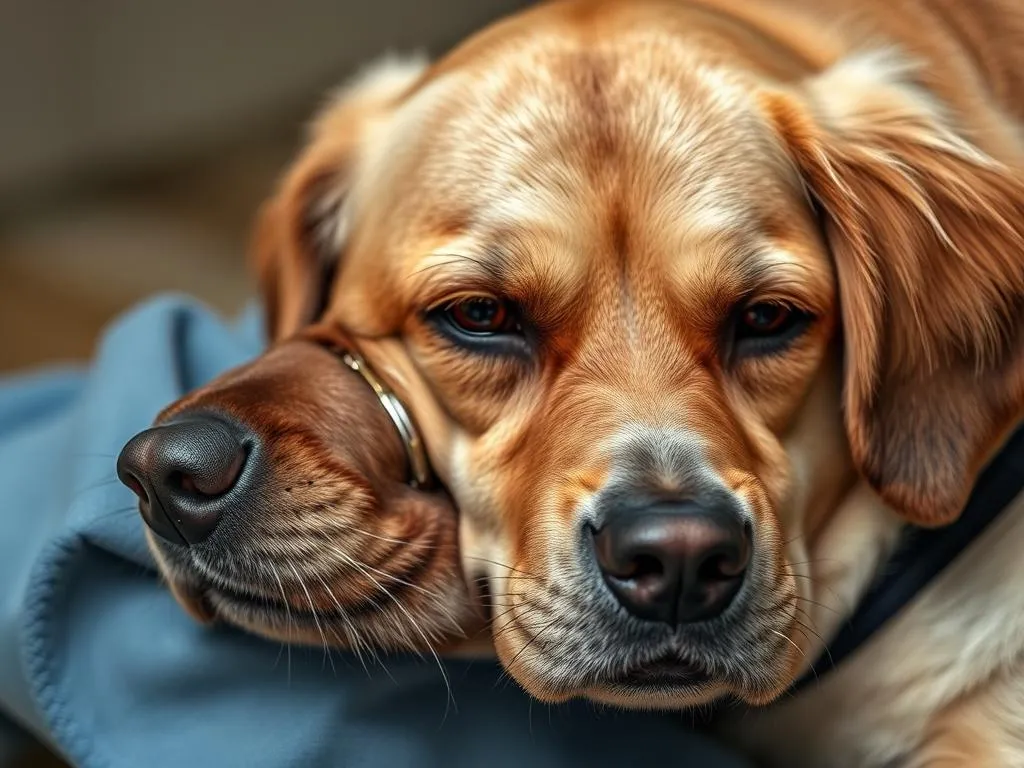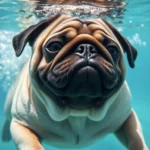
Understanding Dog Dehydration
Definition of Dehydration
Dehydration occurs when a dog loses more fluids than it takes in. It can happen due to various reasons, including excessive heat, illness, or not drinking enough water. In the context of dogs, dehydration can lead to serious health issues and can manifest quickly if not addressed. Understanding the signs of dehydration in dogs is critical for pet owners to ensure their furry friends remain healthy and hydrated.
Importance of Hydration
Water plays a vital role in a dog’s health. It aids in digestion, nutrient absorption, and temperature regulation, and it helps maintain proper joint lubrication. Hydration directly affects a dog’s overall well-being and energy levels. A well-hydrated dog is more likely to have a glossy coat, clear eyes, and a lively demeanor. In contrast, dehydration can lead to lethargy, reduced appetite, and even more severe health complications if not addressed promptly.
Signs of Dehydration in Dogs
Recognizing the signs of dehydration in dogs is essential for early intervention. Here are the primary indicators to watch for:
Physical Signs
-
Dry Gums and Nose
A healthy dog’s gums should be moist and pink. If you observe dryness or a change in color, this may indicate dehydration. Similarly, a cool and moist nose is typical, while a dry, warm nose can be a sign of fluid loss. -
Skin Elasticity Test
Performing a simple skin pinch test can help determine hydration levels. To do this, gently pinch the skin on the back of your dog’s neck and pull it up. In a well-hydrated dog, the skin should quickly return to its normal position. If the skin remains elevated or takes longer to return, this can be a sign of dehydration. -
Sunken Eyes
Sunken eyes are another warning sign. When a dog is dehydrated, the tissues around the eyes can lose moisture, causing them to appear sunken or dull. This can be especially noticeable in dogs with lighter-colored or larger eyes.
Behavioral Signs
-
Lethargy and Weakness
A dehydrated dog may exhibit signs of lethargy, such as a lack of energy or reduced interest in play. If your dog usually has a vibrant personality but seems unusually tired, it may be an indication of dehydration. -
Loss of Appetite
Dehydration can affect a dog’s appetite. If your dog suddenly stops eating or shows reluctance to take treats, it might be feeling unwell due to inadequate fluid intake. -
Panting and Excessive Thirst
Increased panting or seeking out water frequently can also indicate dehydration. If your dog is panting excessively, it might be trying to cool down due to heat or is signaling that it needs more water.
Advanced Signs
-
Rapid Heart Rate
A rapid heart rate can occur as a response to dehydration. Monitoring your dog’s heart rate can be crucial, as a significant increase may indicate serious dehydration. A normal resting heart rate for dogs varies by size but is typically between 60 to 160 beats per minute. -
Vomiting and Diarrhea
These symptoms can lead to a quick loss of fluids, exacerbating dehydration. If your dog is experiencing vomiting or diarrhea, it’s vital to address hydration immediately, as these can worsen the condition.
Causes of Dehydration in Dogs
Understanding the causes of dehydration can help pet owners take preventive measures.
Environmental Factors
-
Heat and Humidity
High temperatures and humidity can significantly affect a dog’s hydration levels. Dogs can overheat quickly, especially in summer or during exercise, leading to increased fluid loss through panting. -
Exercise and Activity Levels
Physical activities, especially in warm weather, can lead to dehydration. A dog that exercises outdoors needs to have access to water before, during, and after play.
Health Conditions
-
Illnesses That Cause Dehydration
Certain health issues, such as diabetes, kidney disease, or gastrointestinal problems, can lead to increased fluid loss or reduced water intake. Recognizing these conditions early can help manage dehydration effectively. -
Medications and Treatments
Some medications, such as diuretics, can lead to increased urination and, consequently, fluid loss. If your dog is on medication, consult your veterinarian to understand any potential impacts on hydration.
Prevention of Dehydration
Preventing dehydration is far easier than treating it. Here are several strategies to keep your dog well-hydrated.
Regular Water Intake
- How Much Water Do Dogs Need?
Generally, dogs need about 1 ounce of water per pound of body weight daily. However, this can vary based on factors such as size, age, activity level, and environmental conditions. Always ensure your dog has access to fresh water throughout the day.
Monitoring Outdoor Activities
- Keeping Dogs Cool
During hot weather or while exercising, it’s crucial to monitor your dog’s hydration levels. Take breaks in the shade, provide water frequently, and avoid strenuous activities during peak heat hours.
Hydration-Friendly Diet
-
Importance of Wet Food vs. Dry Food
Incorporating wet food into your dog’s diet can enhance hydration, as it contains more moisture than dry kibble. This can be particularly beneficial for dogs that are less inclined to drink water. -
Hydration Supplements
There are also various hydration supplements available that can help improve your dog’s fluid intake. Options include electrolyte solutions formulated specifically for dogs, which can be helpful during periods of illness or strenuous exercise.
Treatment for Dehydration
If you suspect your dog is dehydrated, here’s how to address the issue.
Home Care Strategies
-
Encouraging Water Intake
If your dog is reluctant to drink, try offering ice cubes, flavored water, or using a pet water fountain to make drinking more appealing. Changing the water frequently can also encourage them to drink more. -
Homemade Hydration Solutions
In cases of mild dehydration, you can prepare a homemade electrolyte solution by mixing one cup of water with a pinch of salt and a tablespoon of honey. This solution can help replenish lost fluids and electrolytes.
When to Seek Veterinary Help
-
Signs That Require Immediate Attention
If your dog is exhibiting severe symptoms of dehydration, such as persistent vomiting, diarrhea, or extreme lethargy, it’s essential to seek veterinary care immediately. -
Possible Treatments at the Vet
At the veterinary clinic, your dog may receive intravenous fluids to restore hydration levels quickly. The vet may also conduct tests to determine the underlying cause of dehydration and recommend further treatments as needed.
Conclusion
Recognizing the signs of dehydration in dogs is crucial for maintaining your pet’s health. By understanding the causes, prevention methods, and treatments available, you can ensure your furry friend stays hydrated and happy. Regular check-ups with your veterinarian and being mindful of your dog’s hydration needs, especially during warm weather or exercise, will foster a healthier, more active lifestyle for your companion. Always stay informed and proactive about your dog’s health to ensure their well-being.









